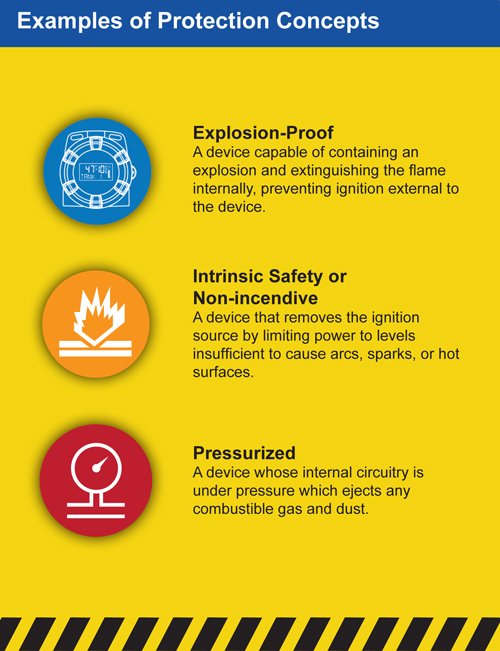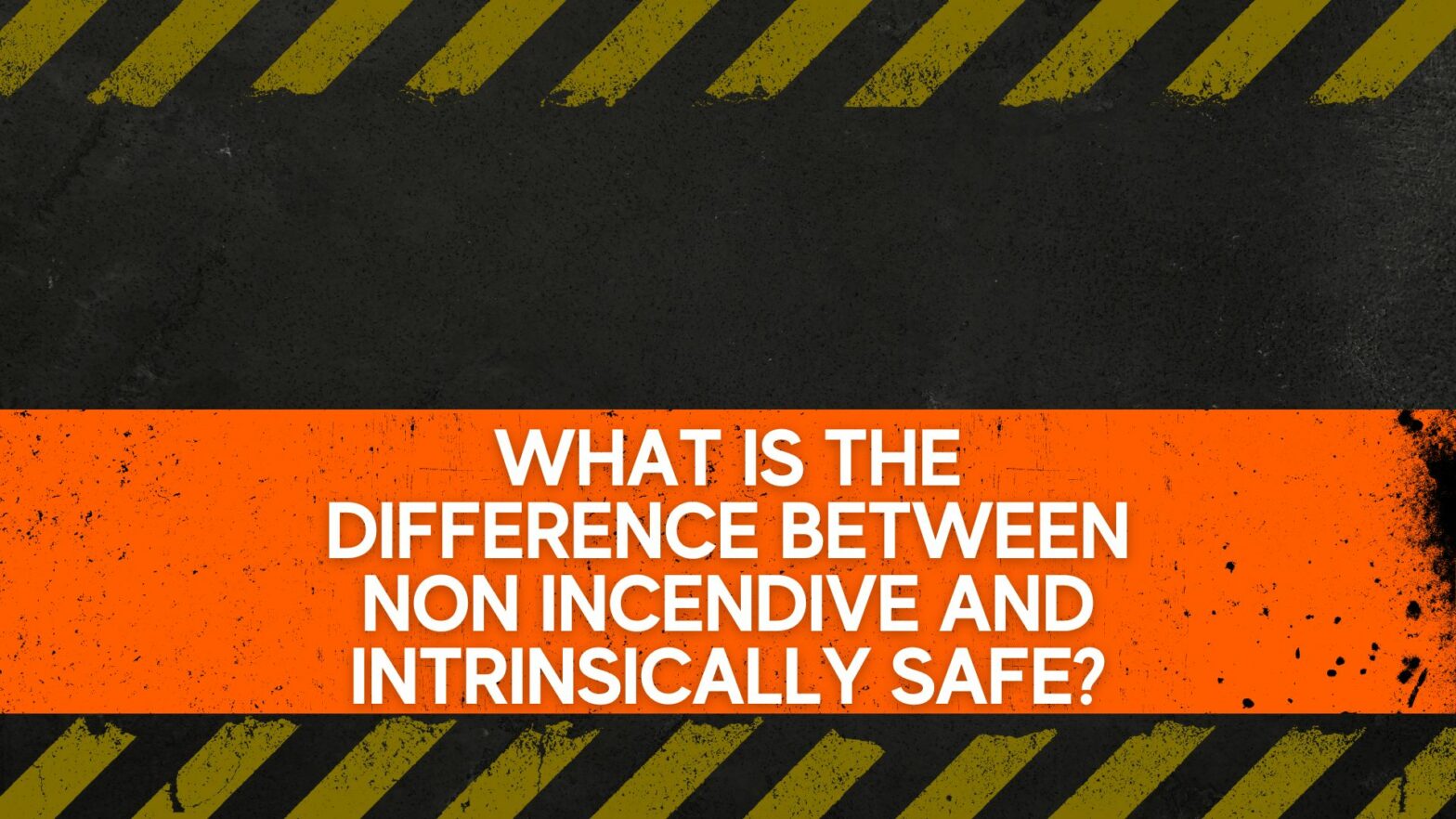We’re frequently asked too many times in every forum and blog concerning the following topic. What is a non-incendive component, and what makes a device intrinsically safe? What is the difference between the two?
An industrial area is hazardous when it contains three fundamental components. Specifically, the three components are a flammable substance such as a gas, liquid, and solid; an oxidizer; and a source of ignition. Examples of flammable substances include hydrogen, gasoline, and kerosene, in addition to solid particulates such as dust or fibers. The oxidizer is commonly the oxygen present in the open air. The ignition source can range from a spark or open flame to something more innocuous like excessive heat–which can cause spontaneous combustion of certain materials.
Let’s identify Non Incendive & Intrinsically Safe
Non-incendive wiring and instrumentation are often less expensive than their intrinsically safe counterparts, so using them can save you money. In particular, non-incendive concepts save construction time because they allow moving I/O out to the field, cutting wiring costs. Also, Inexpensive fiber optics or Ethernet cables connect to the field junction boxes. Non-incendive equipment can range from temperature transmitters to level, flow, analytical, and tank gauging devices.
In an intrinsically safe system, the design limits energy within the component and wiring to prevent ignition. When utilized, an intrinsically safe device is placed in a hazardous area while the power supply is in a secure location (non-hazardous). Additionally, the diodes, resistors, and fuses (Barrier) regulate the device’s power to create a safety barrier. Barriers limit the energy provided to the device in the field. Batteries can be in stand-alone devices within hazardous areas.
To summarize
Non-Incendive ratings signify that while under normal conditions, instrument circuits are incapable of causing ignition of the hazardous atmosphere. Intrinsically safe equipment represents “equipment and wiring which is incapable of releasing sufficient electrical or thermal energy under normal or abnormal conditions to cause ignition of a specific hazardous atmospheric mixture in its most easily ignited concentration.”

Intrinsically safe and non-incendive devices have their appropriate place in hazardous locations. In the end, each protection technique has the same goal of safely deploying reliable electronic devices into explosive environments. Yet, each contains both a different limitation and strength.
By familiarizing yourself with the differences between concepts, you’ll manage instrumentation and circuitry within hazardous areas better.
To learn more about Non incendive vs Intrinsically safe or any other Intrinsically Safe, Explosion Proof or Hazardous Area products please contact our experts at: www.IntrinsicallySafestore.com or call us on 832-699-6726



























Great information about intrinsically safe and non-incendive equipment! Thank you for taking the time to explain these products. The clerk at my local supplier couldn’t answer my question. Great work Safe Store.